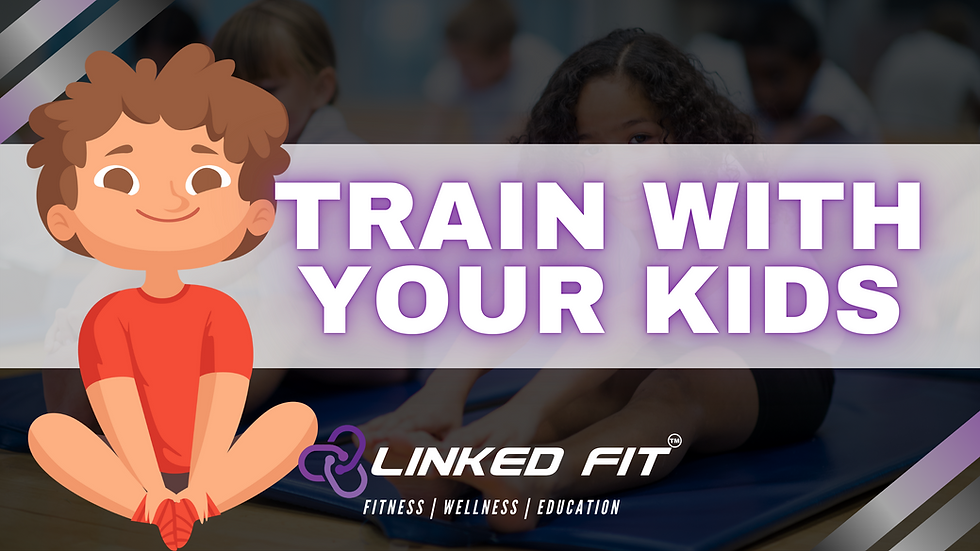Behavioral Change
- Linked Fit

- May 31, 2019
- 5 min read
Updated: Apr 29, 2021

In order to maintain a journey from a developed goal, one must establish the actions of behavioral change. Kwasnicka, Dombrowski, White, and Sniehotta (2016) state that there is a considerable amount of confirmation that behavior can be modified with appropriate interventions. Although there is evidence that supports the acknowledgment of interventions for starting a behavior change, limited evidence supports the sustainability of behavioral change interventions (Kwasnicka et al., 2016). This article is focused on providing insight into how individuals can maintain their journeys while reducing the likelihood of dropout or relapse.

When individuals are exposed to a specific situation, they can react with a variety of behavioral options (Kwasnicka et al., 2016). These behavioral options are influenced by many personal factors such as personality, previous experiences, current coping strategies, and present schedule among the individual (Venegas, Nkangu, Duffy, Fergusson, & Spilg, 2019). Although reactions to specific situations can produce a reaction that may be unpleasant, enhancing one’s outlook to evolve adaptability and resilience is key.
At Linked Fit, we developed our own behavioral change model which addresses five phases that are experienced during a behavior change. Each stage focuses on phases individuals will experience while leaning towards the readiness to change.

1. The Resistance
During the resistance stage, individuals have no current engagement in their future goals. It is not known by the individual of their future goals, as there is no desire to change. Most individuals during this stage are not aware of the need to make a behavioral change. Simply put, individuals have not even thought about it.
2. Building a Reason
As the individual approaches the building stage, they start to develop reasons why they need to change. At this point, they are aware a change is needed but they do not have a full grasp on the reason. Individuals during this stage start the process of contemplation. The considerations of a behavioral change are acknowledged but are not warranted towards starting the journey.
3. Starting the Journey
It is time to start the journey! Individuals now start developing the plan of action that will introduce the path of initiating the goal. Although some individuals may have started operating small changes, many individuals are gathering information on how to appropriately start the journey. At this point, individuals assemble information about how to change. Collecting information that is meaningful towards the goal is key. Individuals may start to explore information from professionals in the appropriate field to obtain significant insight that will be reliable.
Example 1: Starting a fitness and wellness program, consulting with a personal training professional to obtain unplanned circumstances for developing the goal.
Example 2: An athlete focusing on increasing performance for next season, hiring a strength and conditioning coach to provide evidence-based practices to implement in training.

SMART Goal:
S = Specific
When developing a specific goal, it is important to determine the specific interactions within the goal. It can be further defined as the who, what, when, and where the goal will be developed (Alves, 2018).
M = Measurable
When being “smart” about your goals, it is critical to determine the assessment protocol to measure it. A variety of measuring techniques and tools can be utilized but think about how progress will be tracked. Simply, this is how someone will be able to determine if the goal was attained (Alves, 2018).
A = Achievable
Now it is time to think if the goal being developed is achievable. Think about abilities among the individual (or yourself) and also if the resources available can enhance the achievability of the goal (Alves, 2018).
R = Realistic
Although the previous step of the smart goal development evoked the process of achievability, now it is time to regulate the realistic means of the goal. Therefore, it is very crucial for the goal to be realistic about one’s ability to succeed (Alves, 2018).
T = Timely
Now that most of the smart goal has implemented appropriate guidelines for development, the last matter to think about is time. Does the individual developing the goal provide an applicable time to reach the goal? Also, it is important to think about when someone wants to achieve this goal. Maybe it is 3-months, but another goal might be 3-years. All timeframes associated with a goal are highly dependable on what the goal is.
4. The Process
At this phase, individuals have started to initiate the plan of action. The new behavior has been carried out and they are actively developing systems of adaptability. In some cases, individuals experience a form of relapse. Depending on the severity of the individual, they may be starting back at “The Resistance”, “Building a Reason”, or “Starting the Journey”. It is important for individuals to learn appropriate methods of creating adaptability within their journey. The process is like a dirt road, there will always be undesirable bumps in the road but individuals need to develop adaptability through internal or external motivation. These motivational techniques will help provide sufficient tools to decrease relapse or drop out.

“A goal is like a dirt road, there will always be undesirable bumps, but with an elevated adaptability and resilience, anything is possible.” Dane Bartz
5. Journey Maintenance
While maintaining the journey, the behavior has been established and individuals start the process of managing their behaviors to continue the avenue. The goals developed can influence performance by means of focusing one’s efforts and attention on a specific domain (Aghera et al., 2018). While maintaining a journey towards achieving a goal, one will need great efforts and persistence (Aghera et al., 2018). During this phase, developing resilience is vital! Venegas et al. (2019) define resilience as a complex and dynamic phenomenon that occurs between the individual, environment, and socio-cultural factors. The ability to copy, adapt, and thrive from a challenge while experiencing influences in life will increase an individual opportunity to achieve their goal (Venegas et al., 2019).

Conclusion
Unfortunately, relapse rates are high among individuals that seek to lose weight or other wellness goals such as smoking cessation or reducing alcohol consumption (Kwasnicka et al., 2016). Starting a new fitness and wellness journey can be overwhelming and many times individuals find themselves asking; “Why did I start?”. During the journey towards earning a goal, it is important to provide reminders about why the goal is a necessity. Keep the motivation at a high level! As we always say, do not stress the small things! Keep pushing forward! Remember, if one develops a SMART goal while fighting the urges of negativity, they will eventually achieve a goal. As with many goals, it is a timely process and takes hard work!
Reference:
Aghera, A., Emery, M., Bounds, R., Bush, C., Stansfield, R. B., Gillett, B., & Santen, S. A. (2018). A Randomized Trial of SMART Goal Enhanced Debriefing after Simulation to Promote Educational Actions. Western Journal of Emergency Medicine: Integrating Emergency Care with Population Health, 19(1), 112-120. Retrieved from http://liblynxgateway.com/rmuohp?url=http://search.ebscohost.com/login.aspx?direct=true&db=ccm&AN=127465497&site=eds-live&scope=site. doi:10.5811/westjem.2017.11.36524
Alves, C. (2018). Research methodology: how to maximize your research potential. EFORT Open Reviews, 3(5), 184-191. Retrieved from https://dx.doi.org/10.1302/2058-5241.3.170065. doi:10.1302/2058-5241.3.170065
Kwasnicka, D., Dombrowski, S. U., White, M., & Sniehotta, F. (2016). Theoretical explanations for maintenance of behaviour change: a systematic review of behaviour theories. Health psychology review, 10(3), 277-296. Retrieved from https://www.ncbi.nlm.nih.gov/pubmed/26854092
https://www.ncbi.nlm.nih.gov/pmc/articles/PMC4975085/. doi:10.1080/17437199.2016.1151372
Venegas, C. L., Nkangu, M. N., Duffy, M. C., Fergusson, D. A., & Spilg, E. G. (2019). Interventions to improve resilience in physicians who have completed training: A systematic review. PloS one, 14(1), e0210512-e0210512. Retrieved from http://liblynxgateway.com/rmuohp?url=http://search.ebscohost.com/login.aspx?direct=true&db=mdc&AN=30653550&site=eds-live&scope=site. doi:10.1371/journal.pone.0210512














Comments